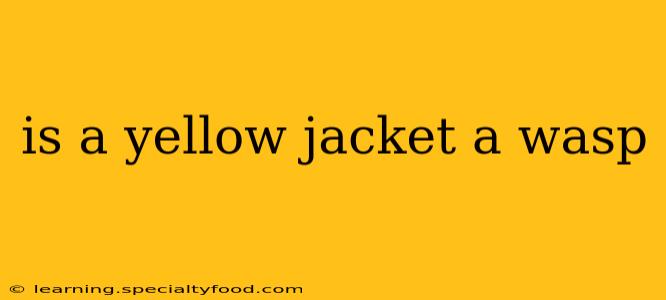Yes, a yellow jacket is a type of wasp. More specifically, yellow jackets belong to the Vespidae family, a large group that includes many different types of wasps, hornets, and yellow jackets. While the terms are often used interchangeably in casual conversation, understanding the nuanced differences helps clarify their relationship.
What Makes a Yellow Jacket Unique?
Yellow jackets are social wasps, meaning they live in colonies with a complex social structure, much like honeybees. These colonies often contain thousands of individuals, with a single queen laying eggs. What distinguishes yellow jackets from other wasps is their distinctive appearance and behavior.
They are characterized by their bright yellow and black markings, often in distinct stripes or bands. Their bodies are typically slender, with a narrow waist connecting the thorax (midsection) to the abdomen. This contrasts slightly with some other wasp species that might have different color patterns or broader waists.
Their aggressive nature is another defining characteristic. Unlike some solitary wasps that are less prone to stinging, yellow jackets are highly defensive of their nests and will readily sting if they feel threatened. This aggressive behavior is a significant reason why they are often feared.
Are All Wasps Yellow Jackets?
No, not all wasps are yellow jackets. The Vespidae family is incredibly diverse, encompassing a wide range of species with varying appearances, behaviors, and nesting habits. Many wasps are solitary, meaning they don't live in large colonies. They also exhibit a wide range of colors and sizes.
Examples of wasps that are not yellow jackets include:
- Paper wasps: These wasps build open, umbrella-shaped nests, usually under eaves or branches. They are generally less aggressive than yellow jackets.
- Hornets: These are generally larger than yellow jackets and are often characterized by their distinct markings and aggressive behavior. They also build large, enclosed nests.
- Mud daubers: These solitary wasps build nests from mud, often found in protected areas like sheds or garages. They are typically not aggressive unless directly threatened.
What are the Differences Between Yellow Jackets and Bees?
While both are stinging insects, there are key differences between yellow jackets and bees:
- Appearance: Yellow jackets have a smooth, slender body with a narrow waist, while bees are typically fuzzier with a more robust body.
- Diet: Yellow jackets are scavengers, feeding on a wide variety of insects, meats, and sugary substances. Bees primarily feed on nectar and pollen.
- Sting: Bees typically only sting once, as their stinger becomes detached from their body. Yellow jackets can sting multiple times.
How Can I Tell if it's a Yellow Jacket?
Identifying a yellow jacket often comes down to recognizing their specific features:
- Bright yellow and black markings: The distinctive color pattern is a key identifier.
- Slender body: Their body is noticeably slimmer than bees.
- Aggressive behavior: Their tendency to sting readily when disturbed is another indicator.
If you're unsure, observing the insect from a safe distance and taking a photograph can help with identification. You can then consult online resources or insect identification guides for confirmation.
What should I do if I encounter a Yellow Jacket Nest?
If you discover a yellow jacket nest near your home or in a frequented area, it's crucial to exercise caution. Do not attempt to remove the nest yourself unless you have the proper protective gear and experience. Contact a pest control professional for safe and effective removal. They have the necessary expertise and equipment to handle this safely.
By understanding the nuances of yellow jackets and their place within the wasp family, you can better appreciate their role in the ecosystem while also protecting yourself from potential stings.
